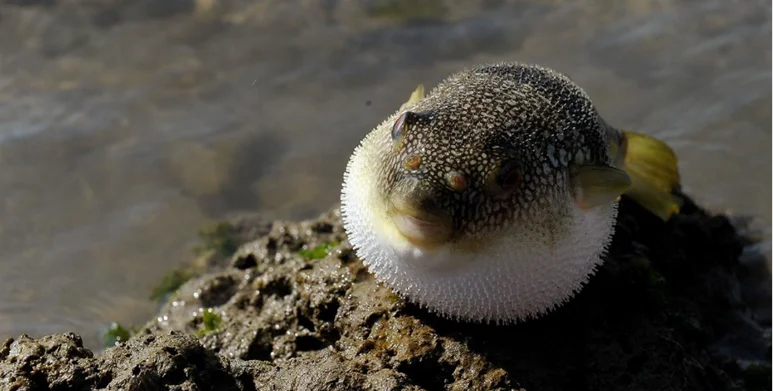Environment & Ecology
In news: A group of animal biologists at the Institute of Transformative Bio-Molecules (ITbM) at Nagoya University in central Japan, have identified the pheromone involved in the mechanism that triggers puffer fish to spawn (release/deposit eggs) on beaches using moonlight.
About:
- Along coastlines around the world, at the time of the spring tide, thousands of puffer fish gather at the water’s edge and perform a writhing motion as they spawn. These fish are known as ‘semilunar spawners’.
- Puffer fish display a synchronised beach-spawning behaviour.
- This is due to release of a pheromone PGE2 into the seawater by the spawning puffers.
- Spring tide means a tide just after a new moon or full moon.
Puffer Fish (or Blow Fish):
- These clumsy swimmers fill their elastic stomachs with huge amounts of water (and sometimes air) and inflate into a ball shape to evade predators.
- Most pufferfish contain a toxic substance that makes them foul tasting and potentially deadly to other fish. The toxin is deadly to humans.
- Most puffers are found in tropical and subtropical ocean waters, but some species live in brackish and even fresh water.
- Threat: pollution, habitat loss, and overfishing

Source: The Hindu
Previous Year Question
Q.1) Which one of the following is a filter feeder? (2021)
- Catfish
- Octopus
- Oyster
- Pelican














